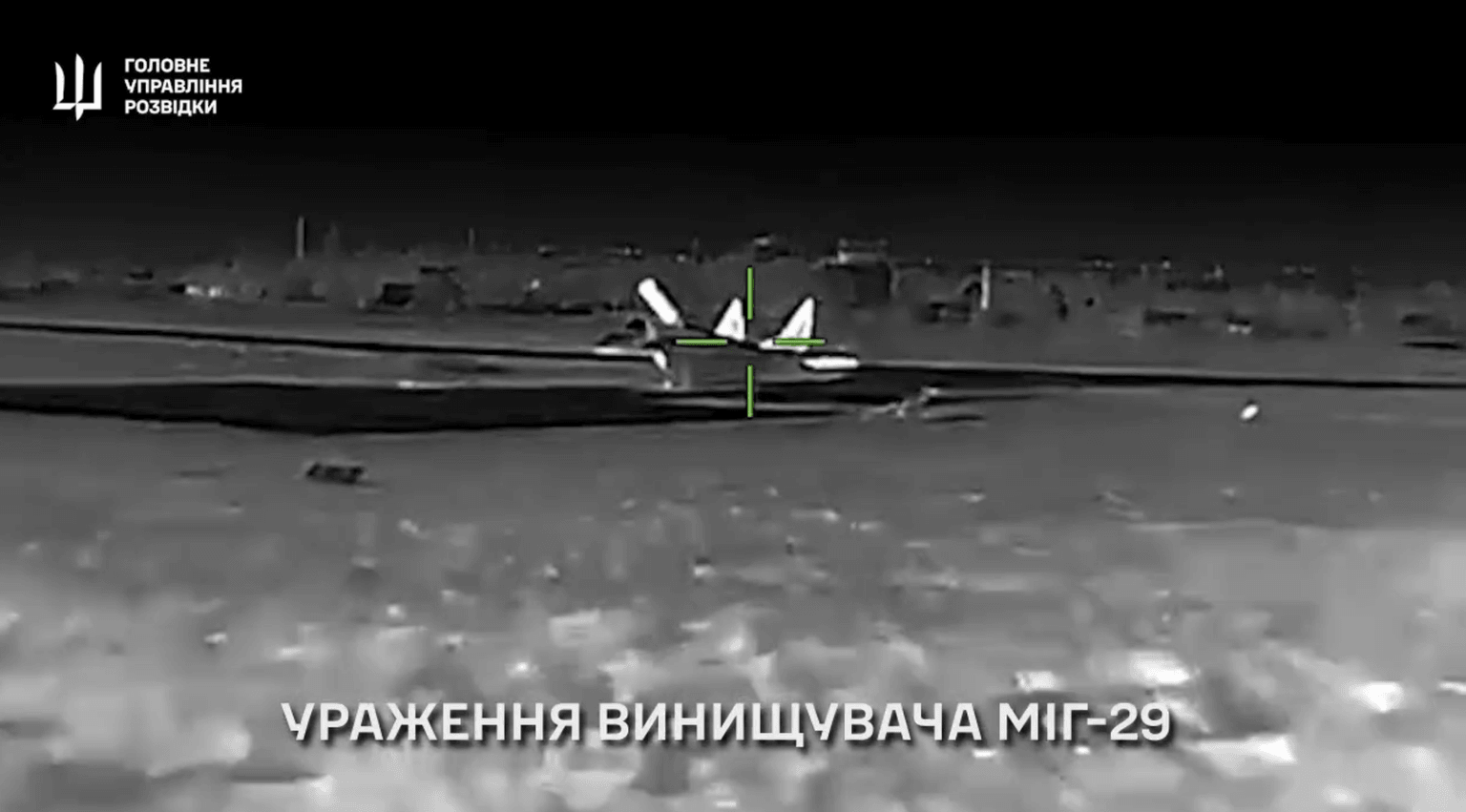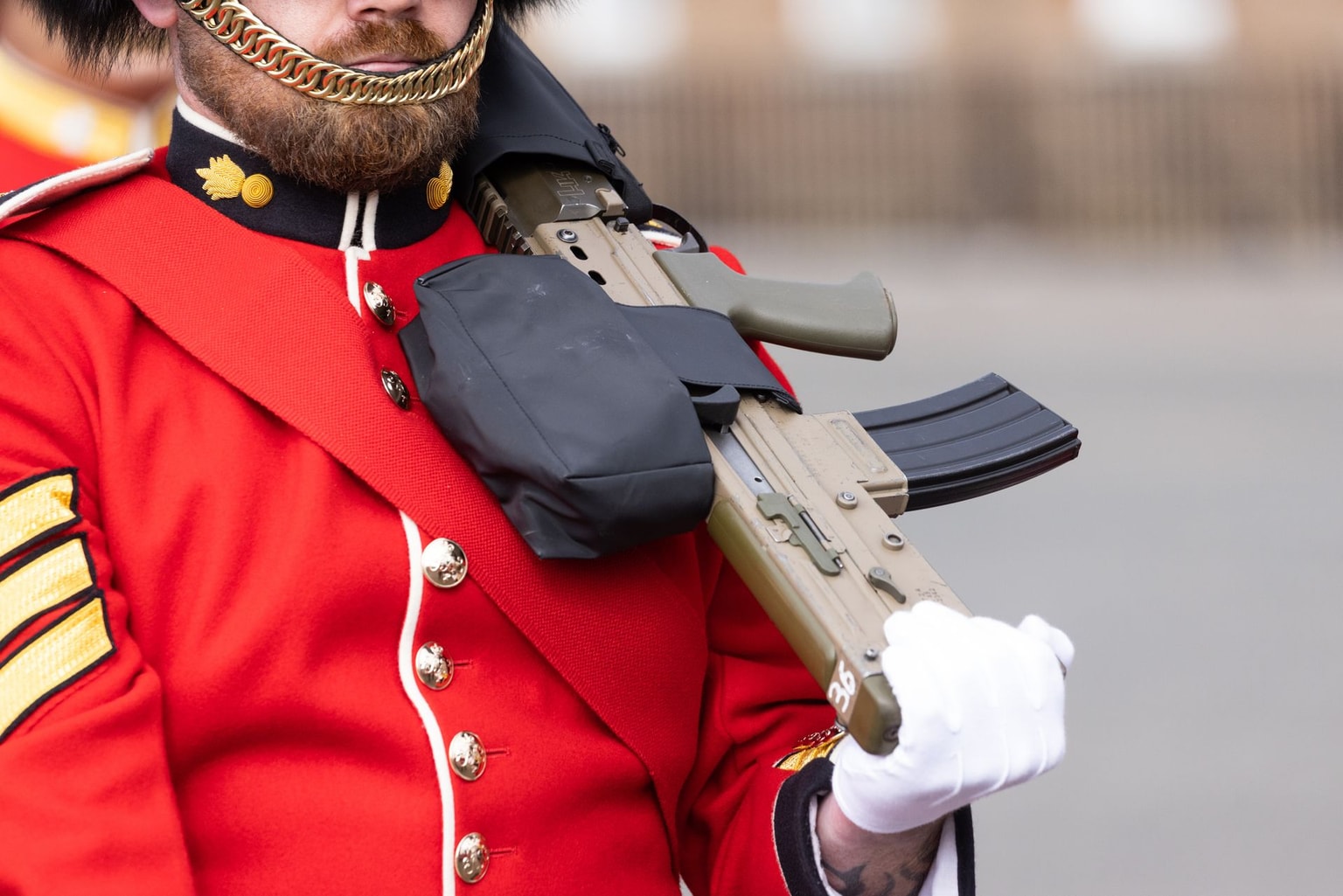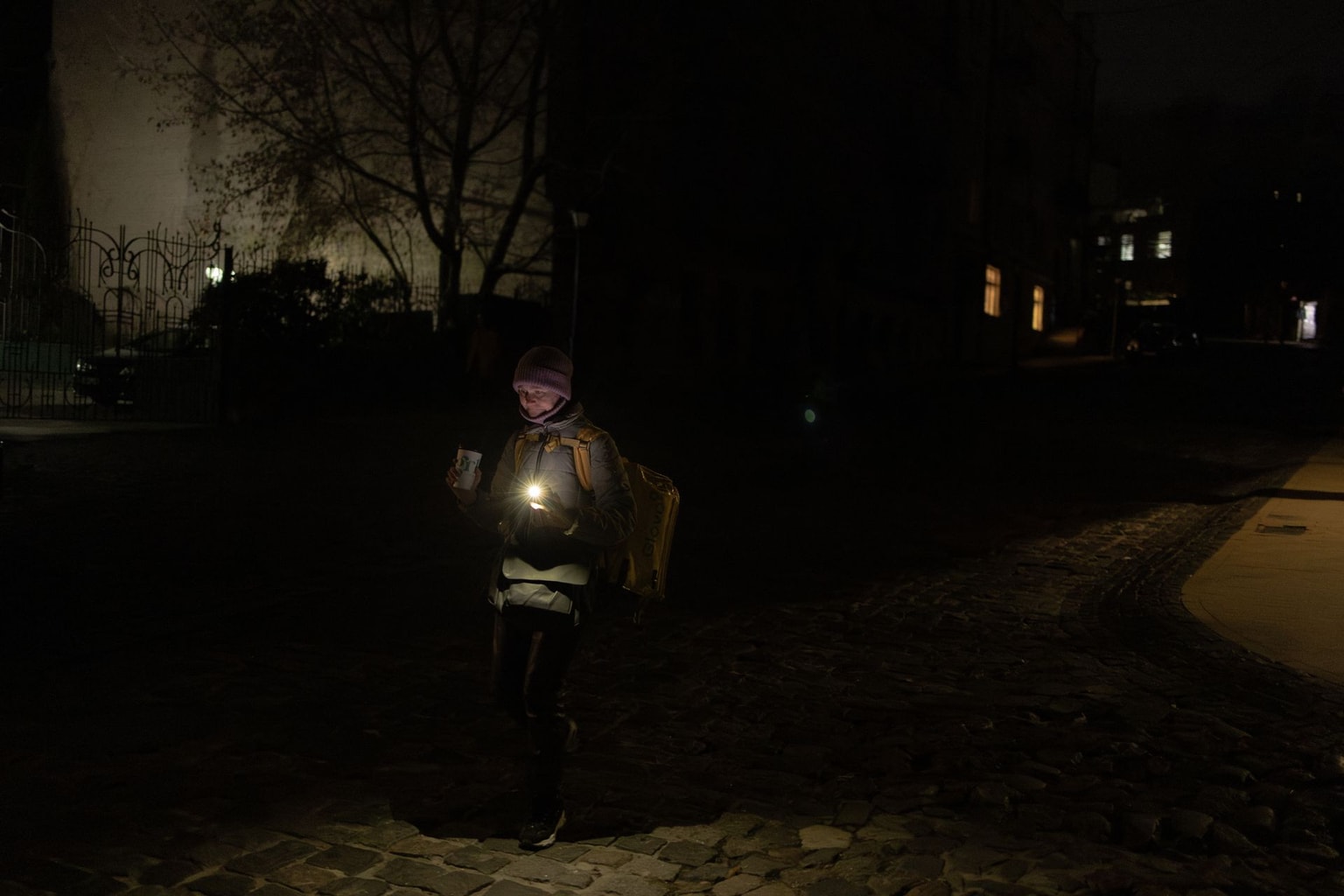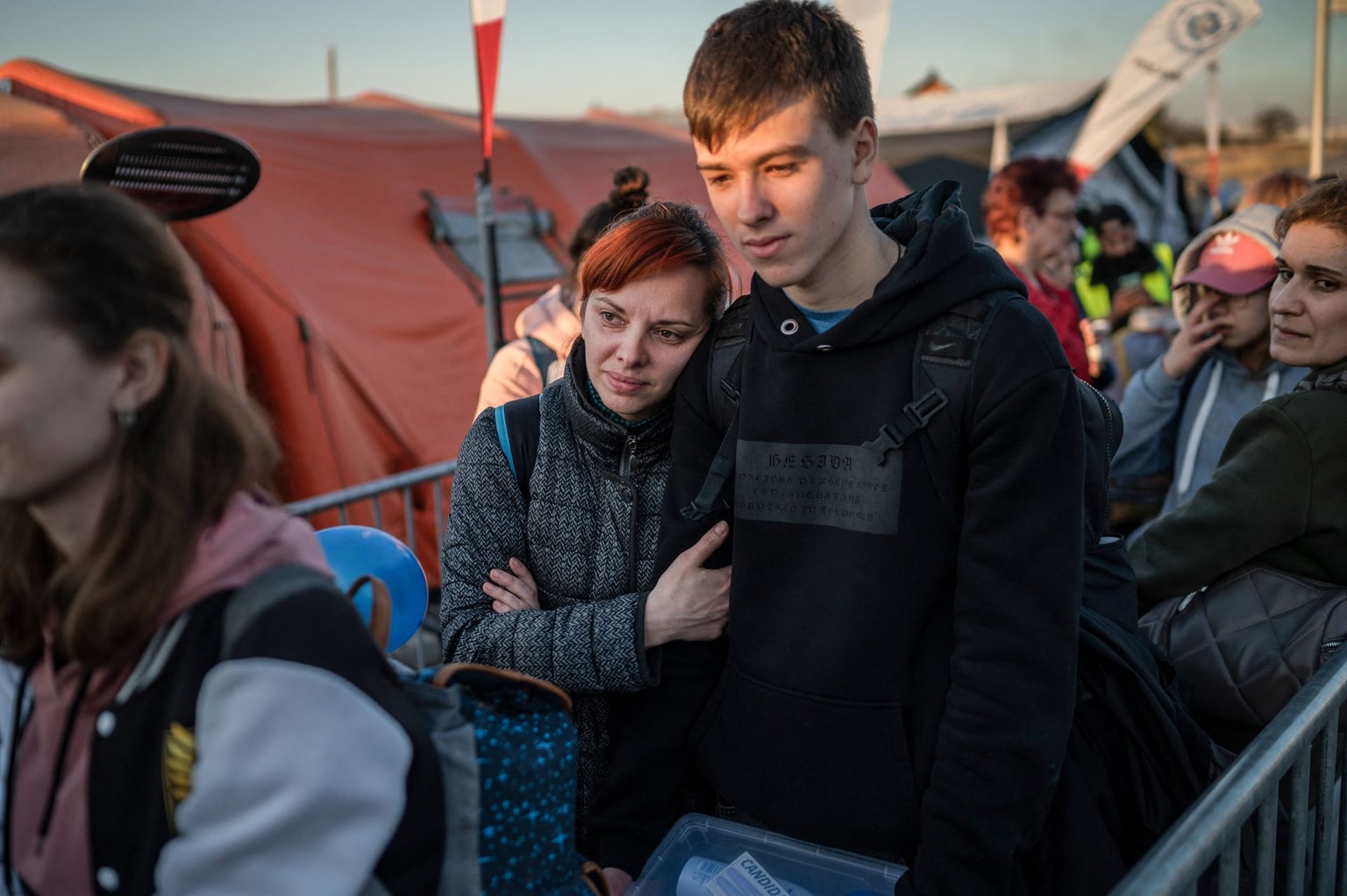
Russia-Ukraine peace talks are dead, for now. But were they ever alive?
U.S. President Donald Trump (R) and Russian President Vladimir Putin (L) arrive for a press conference at Joint Base Elmendorf-Richardson in Anchorage, Alaska, U.S. on Aug. 15, 2025. (Andrew Harnik / Getty Images)
As U.S. President Donald Trump dreams of receiving the 2025 Nobel Peace Prize, his track record as a peacemaker in the world's largest ongoing war remains questionable.
Despite high-profile meetings and Trump's flamboyant rhetoric, progress in peace talks between Russia and Ukraine has been scarce.
Trump has been increasingly frustrated with Russia's refusal to stop the war, and his rhetoric has shifted in Ukraine's favor after being kind to Russian President Vladimir Putin for months.
In an apparent effort to push Russia towards talks, Trump has been considering supplying Tomahawk long-range missiles to Ukraine and pushing other countries to stop buying Russian oil and gas.
But in most cases, the U.S. president has not gone beyond rhetoric, and no action followed his statements.
Jenny Mathers, a lecturer in international politics at the U.K.'s Aberystwyth University, said that the talks "are dead unless something dramatic happens — that might be Trump turning his attention back to Ukraine, or things changing on the ground that change the calculations by either Russia or Ukraine or both."
"At the moment, Moscow believes it has more to gain from continuing its attacks on Ukraine than from peace talks, and while Kyiv has agreed to restart talks on numerous occasions, Ukraine cannot afford to stop resisting Russian attacks or indeed to give in to any and all Russian demands just for the sake of a cessation of hostilities that would probably prove to be short-lived and perhaps entirely meaningless," she added.
Are peace talks dead?
After breaking Russia's diplomatic isolation in Alaska on Aug. 15, Trump claimed that a breakthrough in peace talks was imminent. Since then, the U.S. and Europe have discussed potential security guarantees for Ukraine.
The negotiations on security guarantees seem to have reached a dead end.
The meeting with Russian President Vladimir Putin appears to have stalled rather than advanced the peace talks.
Emboldened by Trump's red carpet treatment and his decision to delay sanctions once again, Putin has not demonstrated any desire to stop the war or achieve a compromise with Ukraine.
"Putin has been clear that he is not ready for peace talks, so currently nothing is happening on this front," Daniel Hamilton, a foreign policy expert at the Brookings Institution, told the Kyiv Independent.
Trump's frustration has not yet led to any concrete action. He has kept setting deadlines after which no action was taken.
Despite Trump's assurances that President Volodymyr Zelensky and Putin would soon meet, the plans have since been forgotten.
Instead of engaging in peace talks, Russia has kept escalating the war against Ukraine and launched attacks against European NATO states, violating their airspace with drones and aircraft.
Due to Russia's reluctance to negotiate a ceasefire or peace deal, Trump's frustration has apparently been growing.
On Sept. 23, Trump made his most pro-Ukrainian statements so far, saying that Kyiv can "fight and win all of Ukraine back in its original form."

Trump added that Russia was a "paper tiger" with a crumbling economy unable to win the war against Ukraine. He also agreed that NATO countries should shoot down Russian aircraft violating the bloc's airspace.
However, Trump's frustration has not yet led to any concrete action. He has kept setting deadlines after which no action was taken.
Asked by reporters on Sept. 23 if he still trusted Putin, Trump responded: "I'll let you know in about a month from now."
"I sense that policy is stuck," Michael O'Hanlon, director of research at the Brookings Institution's Foreign Policy program, told the Kyiv Independent. "We aren't applying enough collective pressure on Russia to push Putin to offer any real concessions, including a ceasefire."
Ruth Deyermond, senior lecturer in post-Soviet security at King's College London, also argued that "the idea of Russia-Ukraine peace talks was always unrealistic while Russia had no interest in stopping its war and Ukraine was unwilling to capitulate."
"That's been true all year and is still true, so I don't see any change in the chances of peace talks," she added. "Trump certainly seems less interested in a Russia-Ukraine' deal' than he was a few months ago."
Russian oil and gas
One of the tools Trump has used to push Russia towards peace is the threat of tariffs against countries that buy Russian oil and gas.
In August, he imposed a 25% tariff on India over its purchases of Russian oil. However, the tariff appears to have been ineffective.
"The introduction of elevated U.S. tariffs on Indian exports has so far not led to a change in India's energy policy," the Kyiv School of Economics' KSE Institute told the Kyiv Independent. "The government has made it clear that it does not intend to reduce imports of Russian crude, citing the need for energy security and a commitment to maintaining a diversified supply balance."
Meanwhile, Trump has failed to impose a tariff on China, another big buyer of Russian oil, and effectively scrapped a congressional bill that would impose 100% tariffs on countries that buy Russian oil and other products.
Serhiy Fursa, an economic expert at Ukrainian investment bank Dragon Capital, said that U.S. tariffs against China due to Russian oil imports are unlikely.
"Trump has already tried to impose tariffs (unrelated to Russia) on China but did not succeed," Fursa told the Kyiv Independent. "He backed down... because China has major leverage."
When Trump tried to impose tariffs on Chinese imports, Beijing retaliated with its own tariffs. Eventually, the two countries agreed to pause the import duties.
On Sept. 13, Trump said he would hit Russia with "major" sanctions if all NATO members unite and stop buying Russian oil. He said on Sept. 23 that he would meet with European officials to persuade them to stop buying Russian oil and gas.
Mathers argued that Trump's statements amounted to an excuse for not imposing U.S. tariffs on buyers of Russian oil and gas.
However, the KSE Institute reported that Trump's "signal had a notable impact on the internal EU debate over further reducing dependence on Russian energy sources."
The EU is currently considering accelerating its phase-out of Russian oil and gas imports from the end of 2027 to the end of 2026.
But it is not clear if Washington and Brussels will manage to persuade Hungary and Slovakia to halt their imports.
"The difficulty lies primarily with (Hungarian Prime Minister) Viktor Orban," Hamilton said. "If Trump seriously wanted to push the EU, he would simply call Orban and make it happen."

However, even if Europe stops buying Russian oil and gas, this will not be soon, and the effect will be negligible, according to Fursa. Hungary and Slovakia account for about 3% of Russia's total oil exports, and Europe also imports Russian liquefied natural gas (LNG).
If Turkey halted imports of Russian oil and gas, that would be more significant, Fursa said.
Imports of Russian oil to Turkey have fallen due to competition from other suppliers, sanctions, and pressure from the U.S., Reuters reported on Sept. 26. But the KSE Institute said the latest data contradicts this trend.
At the same time, the U.S. Senate is considering a bill to sanction Russia's shadow oil tanker fleet but no progress on it has been made so far.
Long-range strikes
A new variable in the calculus around the peace talks is Ukraine's ability to carry out long-range strikes deep into Russian territory.
Ukrainian attacks have become more effective in recent months, with drones venturing deeper into Russia, damaging about a third of the country's oil refining capacity and triggering a fuel crisis.
However, the effect has been limited due to Ukraine's lack of long-range missiles.
U.S. Vice President JD Vance said in September that the U.S. was "looking at" providing Kyiv with Tomahawk cruise missiles, which have an operational range between 1,600 and 2,500 kilometers.
Ukraine currently relies on Western-supplied Storm Shadow missiles, which have a range of 250 kilometers (155 miles), far shorter than Tomahawks.
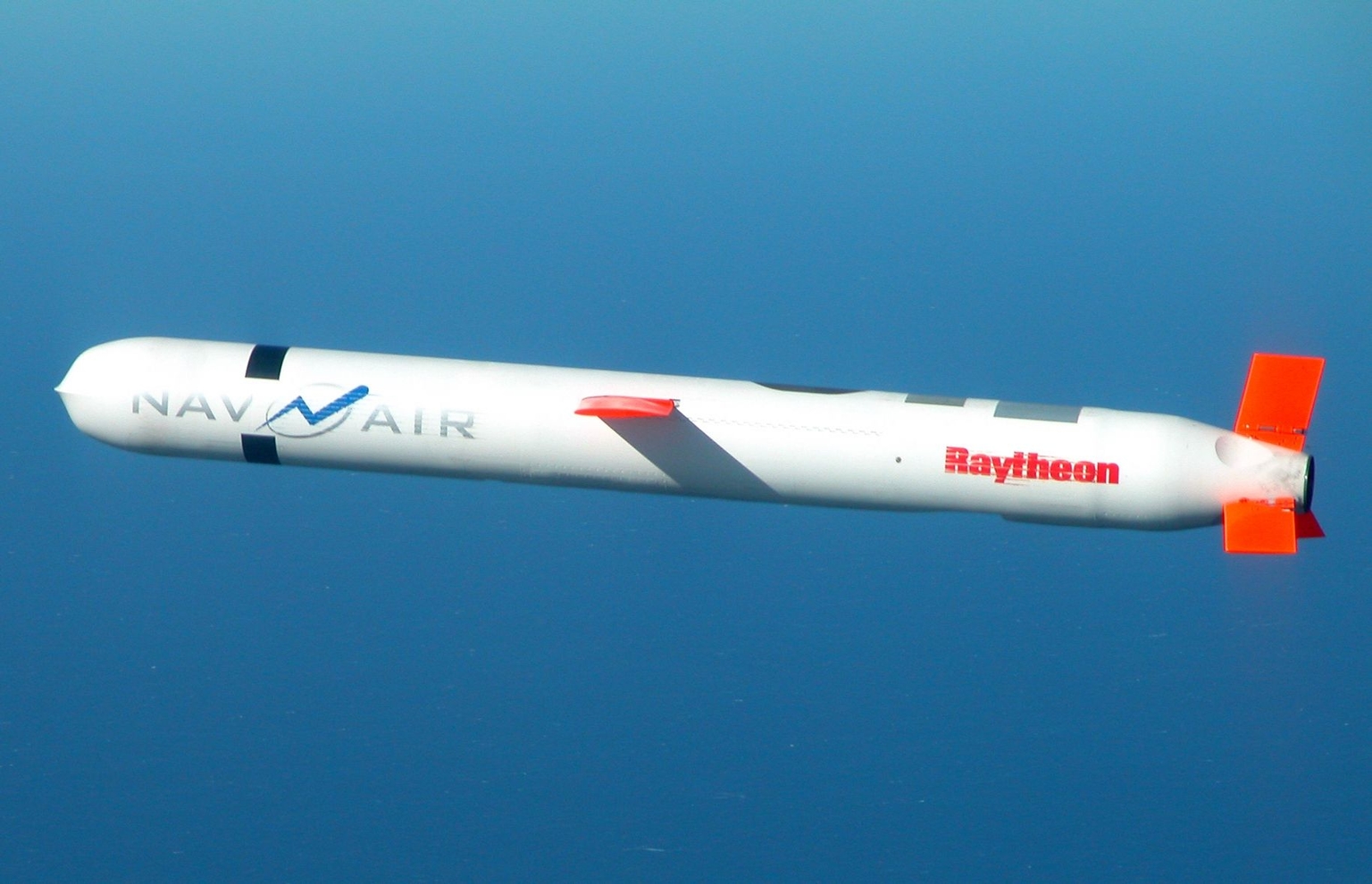
The U.S. will also begin providing Ukraine with intelligence to support long-range missile strikes on Russia's energy infrastructure, the Wall Street Journal reported on Oct. 1.
Peter Rough, a senior fellow at Hudson Institute, argued that "all of these moves, from public utterances on Tomahawks to intelligence support, are intended to push Russia toward talks."
Other analysts were more skeptical.
Mathers said that "if the U.S. were to provide Ukraine with Tomahawks, then a lot would depend on how many and whether there would be strings attached to how Kyiv could use them."
"Unless the Trump administration actually commits to supplying Tomahawks to Ukraine, we should assume that reports they're considering it are just spin like the talk of sanctions — intended to give the impression they are helping Ukraine without actually helping Ukraine," Deyermond said.




